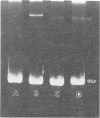Abstract
Large-molecular-weight plasmids were isolated from virulent and avirulent strains of Bacillus anthracis. Each strain contained a single plasmid species unique from the others with respect to molecular weight. Bacterial strains were cured of their resident extrachromosomal gene pools by sequential passage of cultures at 42.5 degrees C. Coincidental to the curing of plasmids was a loss of detectable lethal toxin and edema-producing activities and a dramatic decrease in lethal factor and protective antigen serological activities. The involvement of these plasmids in the production of toxin was firmly established by transformation of heat-passaged cells with plasmid DNA purified from the parent strain. The ability to produce parent strain levels of toxin was restored, and the plasmid DNA similar in molecular weight to that isolated from the parent was reisolated in all transformants examined. The exact role these plasmids play in the production of toxin remains to be elucidated. Two additional strains of B. anthracis, designated Pasteur vaccine strains, were examined for the ability to produce toxin and for the presence of plasmid DNA. Both strains were found to be nontoxigenic and contained no detectable plasmid elements. It is therefore likely that we, like Pasteur, cured B. anthracis strains of temperature-sensitive plasmids which code for toxin structural or regulatory proteins.
Full text
PDF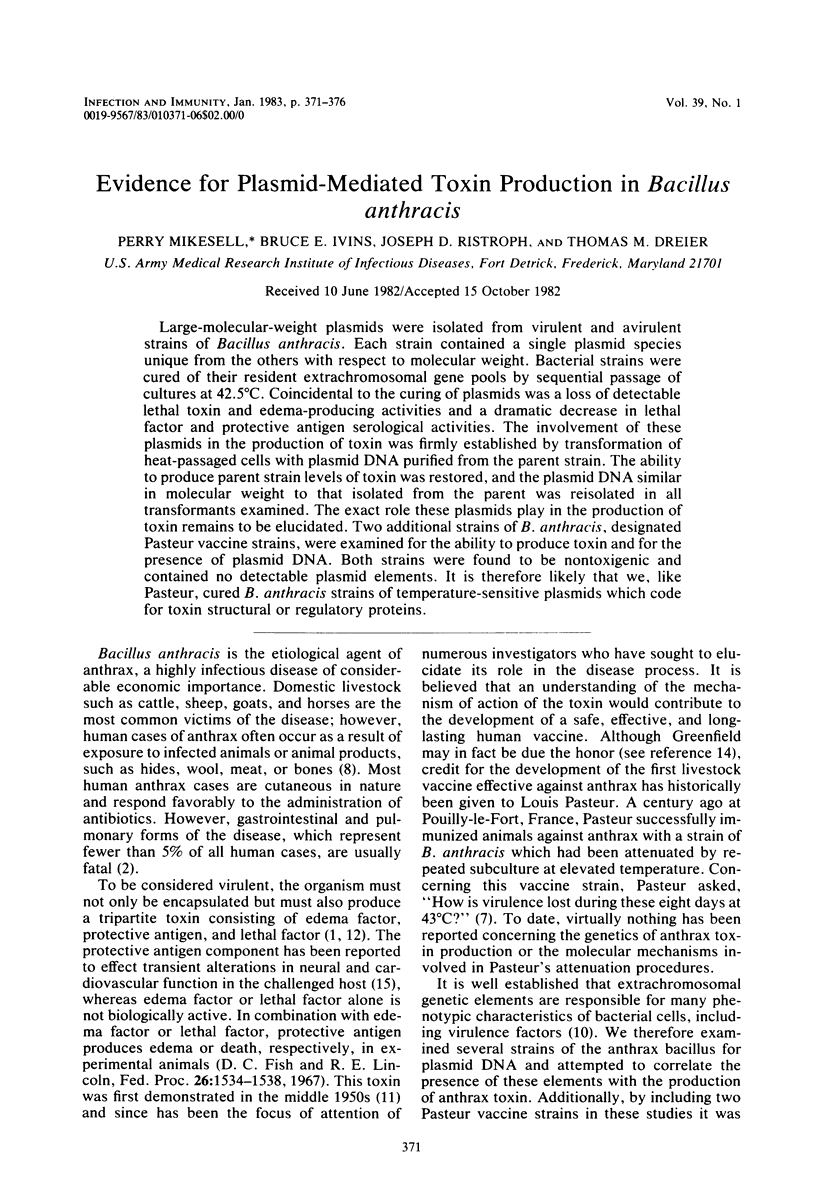
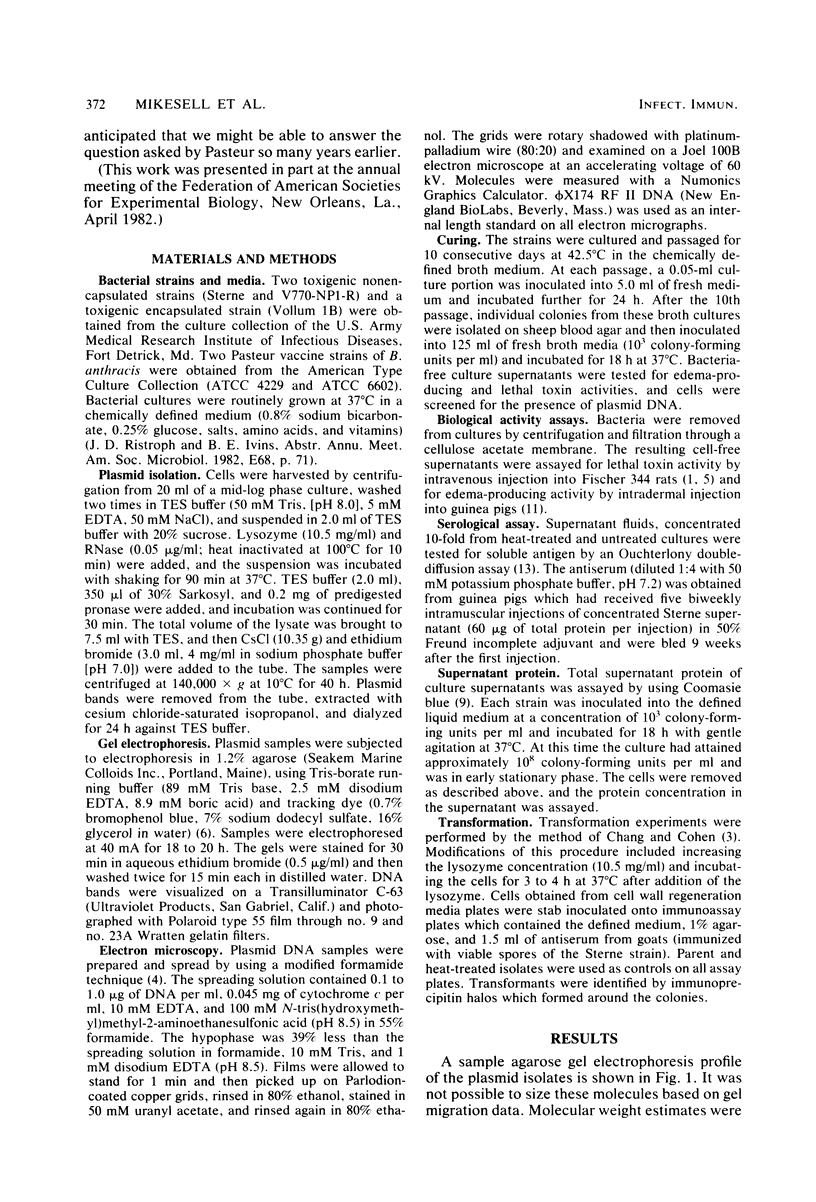
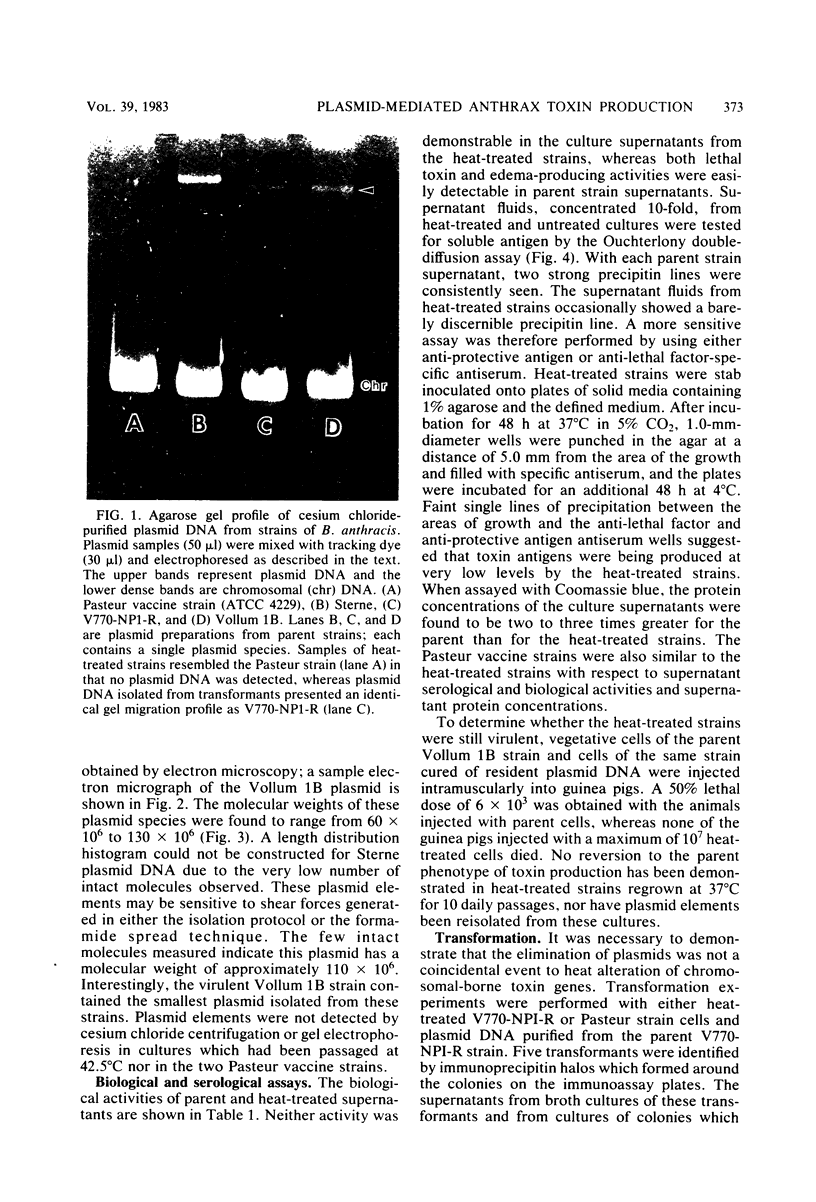
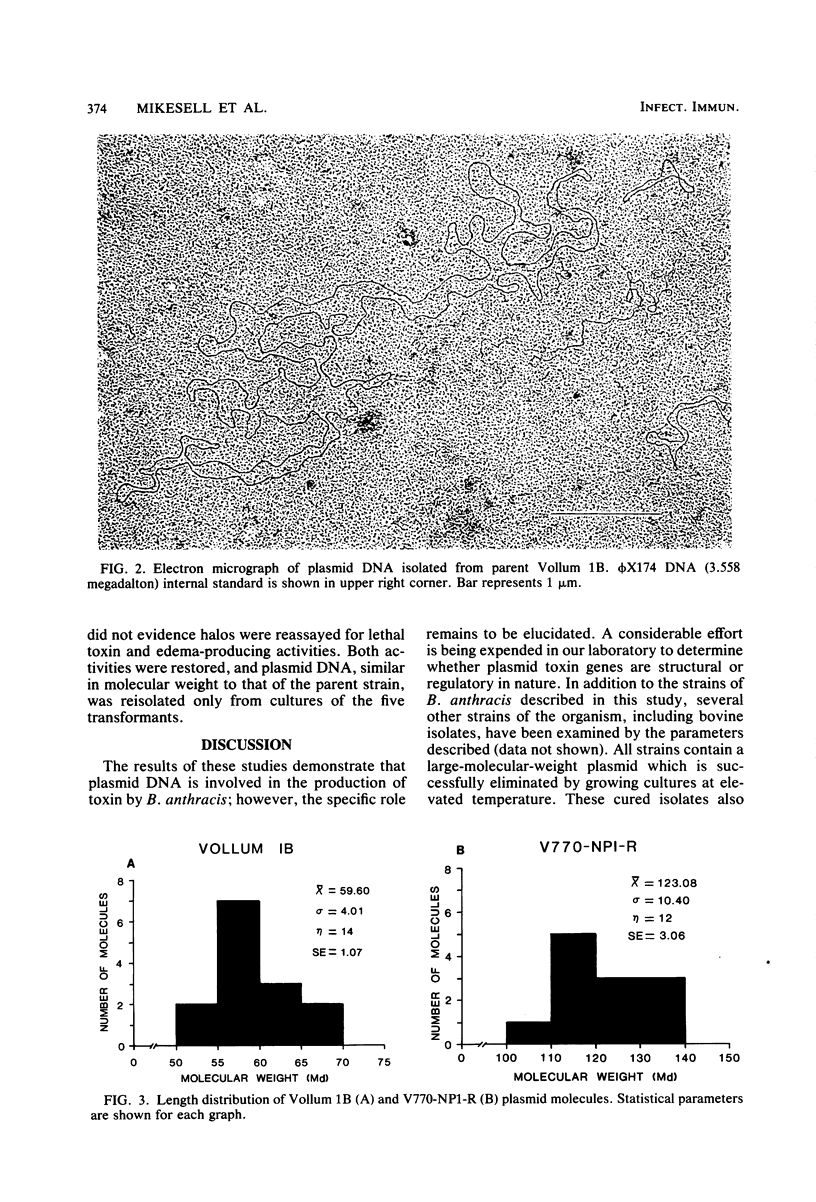
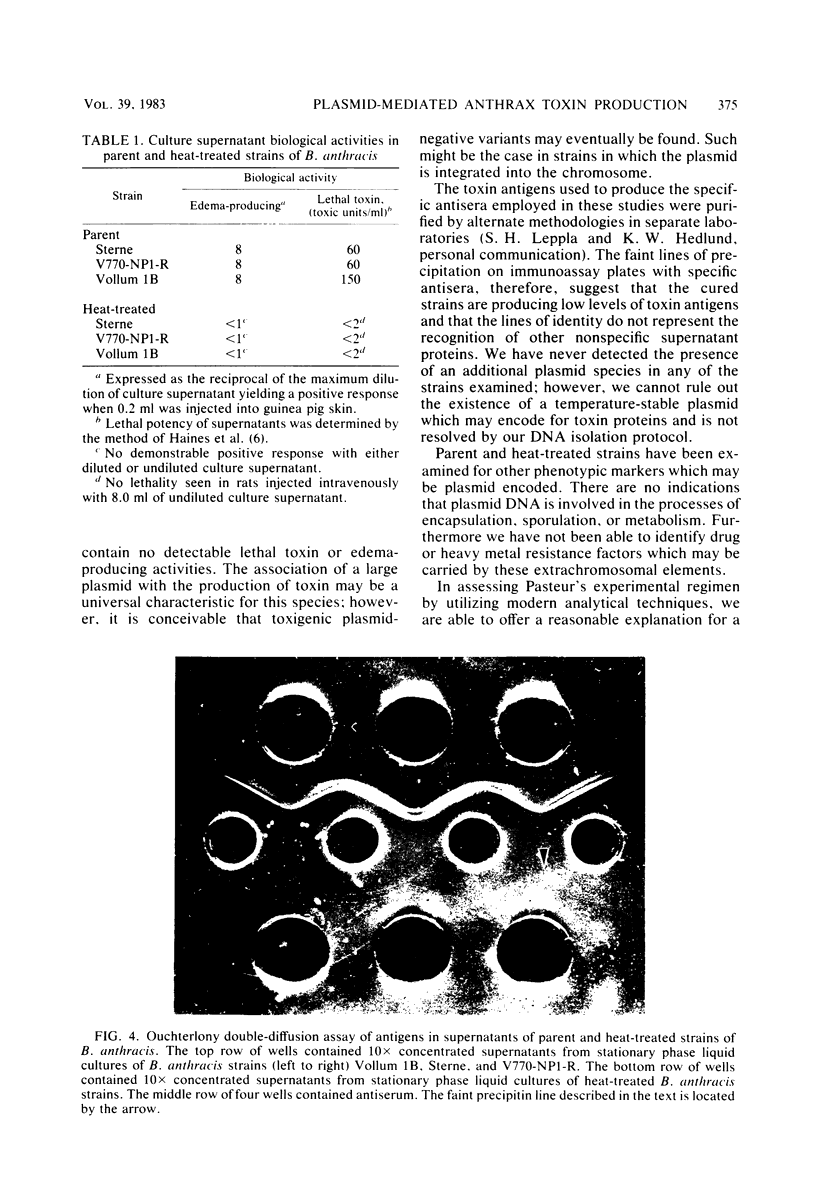
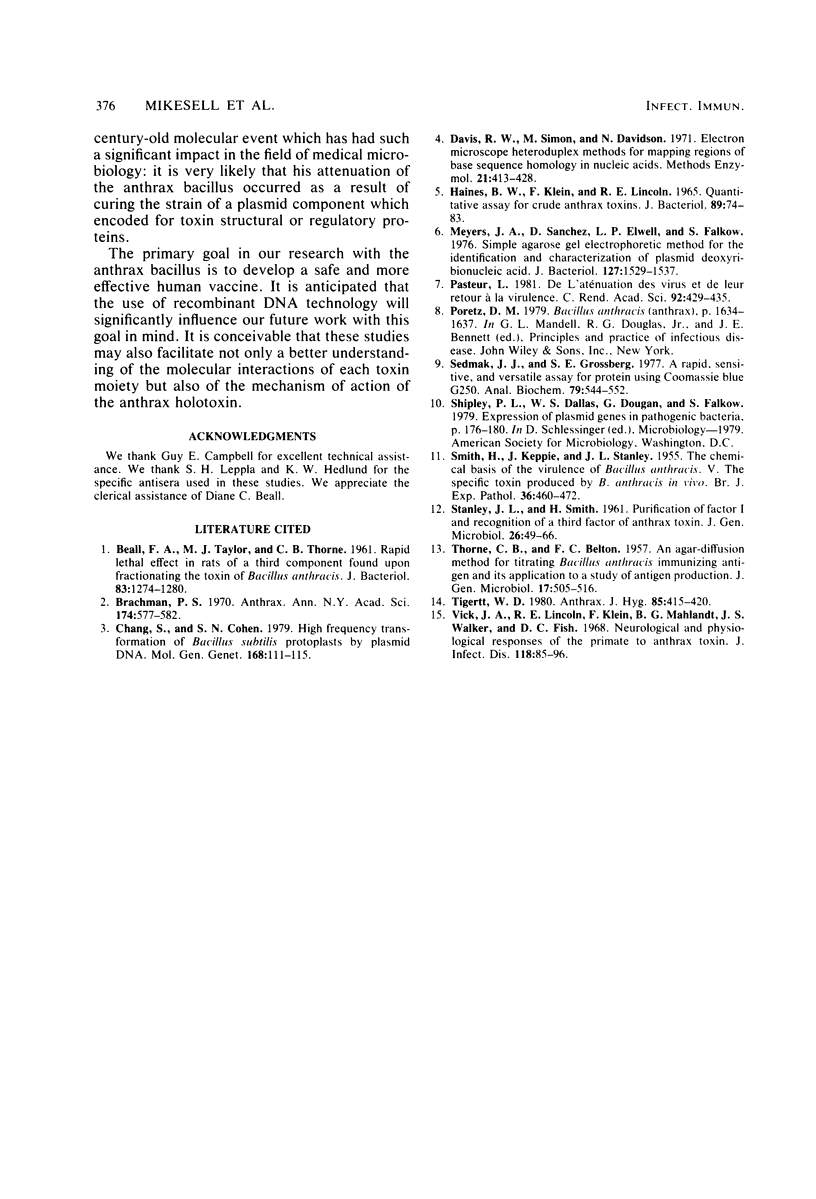
Images in this article
Selected References
These references are in PubMed. This may not be the complete list of references from this article.
- BEALL F. A., TAYLOR M. J., THORNE C. B. Rapid lethal effect in rats of a third component found upon fractionating the toxin of Bacillus anthracis. J Bacteriol. 1962 Jun;83:1274–1280. doi: 10.1128/jb.83.6.1274-1280.1962. [DOI] [PMC free article] [PubMed] [Google Scholar]
- Brachman P. S. Anthrax. Ann N Y Acad Sci. 1970 Oct 30;174(2):577–582. doi: 10.1111/j.1749-6632.1970.tb45583.x. [DOI] [PubMed] [Google Scholar]
- Chang S., Cohen S. N. High frequency transformation of Bacillus subtilis protoplasts by plasmid DNA. Mol Gen Genet. 1979 Jan 5;168(1):111–115. doi: 10.1007/BF00267940. [DOI] [PubMed] [Google Scholar]
- HAINES B. W., KLEIN F., LINCOLN R. E. QUANTITATIVE ASSAY FOR CRUDE ANTHRAX TOXINS. J Bacteriol. 1965 Jan;89:74–83. doi: 10.1128/jb.89.1.74-83.1965. [DOI] [PMC free article] [PubMed] [Google Scholar]
- Meyers J. A., Sanchez D., Elwell L. P., Falkow S. Simple agarose gel electrophoretic method for the identification and characterization of plasmid deoxyribonucleic acid. J Bacteriol. 1976 Sep;127(3):1529–1537. doi: 10.1128/jb.127.3.1529-1537.1976. [DOI] [PMC free article] [PubMed] [Google Scholar]
- SMITH H., KEPPIE J., STANLEY J. L. The chemical basis of the virulence of Bacillus anthracis. V. The specific toxin produced by B. Anthracis in vivo. Br J Exp Pathol. 1955 Oct;36(5):460–472. [PMC free article] [PubMed] [Google Scholar]
- STANLEY J. L., SMITH H. Purification of factor I and recognition of a third factor of the anthrax toxin. J Gen Microbiol. 1961 Sep;26:49–63. doi: 10.1099/00221287-26-1-49. [DOI] [PubMed] [Google Scholar]
- Sedmak J. J., Grossberg S. E. A rapid, sensitive, and versatile assay for protein using Coomassie brilliant blue G250. Anal Biochem. 1977 May 1;79(1-2):544–552. doi: 10.1016/0003-2697(77)90428-6. [DOI] [PubMed] [Google Scholar]
- THORNE C. B., BELTON F. C. An agar-diffusion method for titrating Bacillus anthracis immunizing antigen and its application to a study of antigen production. J Gen Microbiol. 1957 Oct;17(2):505–516. doi: 10.1099/00221287-17-2-505. [DOI] [PubMed] [Google Scholar]
- Tigertt W. D. Anthrax. William Smith Greenfield, M.D., F.R.C.P., Professor Superintendent, the Brown Animal Sanatory Institution (1878-81). Concerning the priority due to him for the production of the first vaccine against anthrax. J Hyg (Lond) 1980 Dec;85(3):415–420. doi: 10.1017/s0022172400063488. [DOI] [PMC free article] [PubMed] [Google Scholar]
- Vick J. A., Lincoln R. E., Klein F., Mahlandt B. G., Walker J. S., Fish D. C. Neurological and physiological responses of the primate to anthrax toxin. J Infect Dis. 1968 Feb;118(1):85–96. doi: 10.1093/infdis/118.1.85. [DOI] [PubMed] [Google Scholar]



